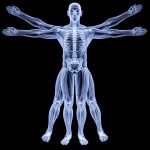Obesity is a disease that affects nearly one-third of the adult American population, which equates to approximately 60 million people. Each year, obesity is the root cause of at least 300,000 deaths in the U.S., and the annual healthcare costs of American adults with obesity amount to approximately $100 billion. Despite these alarming facts, obesity does not receive the attention it deserves from the government, insurance industry or healthcare community. As professionals invested in using touch therapy to improve body issues, bodyworkers can play an important role in supporting obese clients.
Obesity is an accumulation of fat in the body’s fat cells to such a serious degree that it rapidly increases the risk of several diseases and mortality. Below are some facts about this rising national crisis:
- Obesity is a chronic disease with a strong genetic component.
- Obesity increases one’s risk of developing conditions such as high blood pressure, diabetes (type 2), heart disease, stroke, gallbladder disease and cancer of the breast, prostate and colon.
- Health insurance providers rarely pay for treatment of obesity despite its serious effects on health.
- The tendency toward obesity is fostered by our environment: lack of physical activity combined with high-calorie, low-cost foods
- If maintained, even weight losses as small as 10 percent of body weight can improve one’s health.
- The National Institutes of Health spends less than 1.0 percent of its annual budget on obesity research.
- Obese people are often victims of various forms of discrimination, and are penalized for their condition despite many federal and state laws and policies.
Emotional Consideration
Many individuals carrying excess weight are uncomfortable within their physical body. Choosing a somatic therapy, such as massage, can be a tremendous leap of faith for this population. The decision to try a somatic therapy means addressing fears of exposing themselves, receiving work on neglected skin and being vulnerable to prejudice and criticism.
When working with an obese client, sensitivity to the client’s fears is paramount. A sensitive client may pick up a therapist’s preconceived judgments about overweight or obese people. When the therapist is void of judgment, physically touching and manipulating body tissues harboring negative emotions (shame, rejection, etc.) can be a transforming experience for the receiver.
Physiological Consideration
People living with obesity often struggle with challenges typically addressed by massage therapists.
Pain – Very large people often experience chronic pain from the extra weight carried; joints ache and muscles fatigue due to the constant stress placed on their skeletal system. In an effort to mask what is socially unacceptable, many obese people are accustomed to ignoring their body and its dialogue. Therefore, many heavy people don’t acknowledge or report the level of pain they are in. Understanding the connection between obesity and pain can help the therapist gain perspective on a heavy person’s needs.
Range of Motion – While obese people are often strong and can have normal flexibility, they may have trouble reaching their full range-of-motion (ROM) unassisted. These individuals can benefit greatly from resisted stretching and mobility work for their joints and muscles.
Relaxation – Many obese people suffer from sleep apnea, asthma and other breathing problems. Very heavy people are typically unable to lay on their back or stomach for extended periods of time. Because a person with labored breathing has a difficult time relaxing, teaching breathing techniques or performing massage to induce relaxation will yield dramatic positive consequences.
Circulation – One of the caveats of fat accumulation is the hampering of blood, lymph, energy and oxygen circulation. The physical manipulation of tissue mobilizes circulation that can bring these much needed substances to previously deprived tissue. Massage helps move lymph, blood, energy and oxygen to the various organs and tissues in ways for those who don’t exercise much or are largely immobile.
Because a wide range of techniques can help with the challenges of obesity, an integrated approach can provide the best results. Check out the instructional series, Integrative Massage offered by the Institute for Integrative Healthcare Studies to help distinguish which moves are best combined for a specific concern.
Practical Consideration
An obese person’s physical constraints require ingenuity and forethought on the part of the treating practitioner. For people who weigh more than 300 pounds, lying on a massage table may be uncomfortable. Even a sturdy, extra wide table may be insufficient for a very heavy person to be truly comfortable. Giving these clients the option of floor work can not only allay a client’s fear of discomfort or table collapse, but it can also benefit the practitioner. Floor work greatly increases the therapist’s options in regard to leverage, positioning, bolstering, stretching and mobility work.
Established medical professions have largely ignored the growing population of obese people. Bodyworkers are well suited to take the lead in treating those burdened by excessive weight with the respect, skill and therapeutic intent they deserve. When honoring the emotional and physiological benefits massage can offer obese individuals, a bodyworker can be a part of a bodily transformation – to the appreciation, relaxation and pain-free wonders of the human form.
Recommended Study:
Integrative Massage: Earth, Integrative Massage: Fire, Integrative Massage: Spirit
References:
www.cdc.gov, Overweight, National Center for Health Statistics, 2006.
www.livingtreemassage.com, What’s different about working with the obese?, Theresa L. Brennan, 2006.
www.nhlbi.nih.gov, The Practical Guide: Identification, Evaluation and Treatment of Overweight and Obesity in Adults, National Institutes of Health, October 2000.
www.obesity.com, What is Obesity?, American Obesity Association, 2005.
www.ontcm.com, Hand Massage For Obesity, Medboo Health, 1999.















